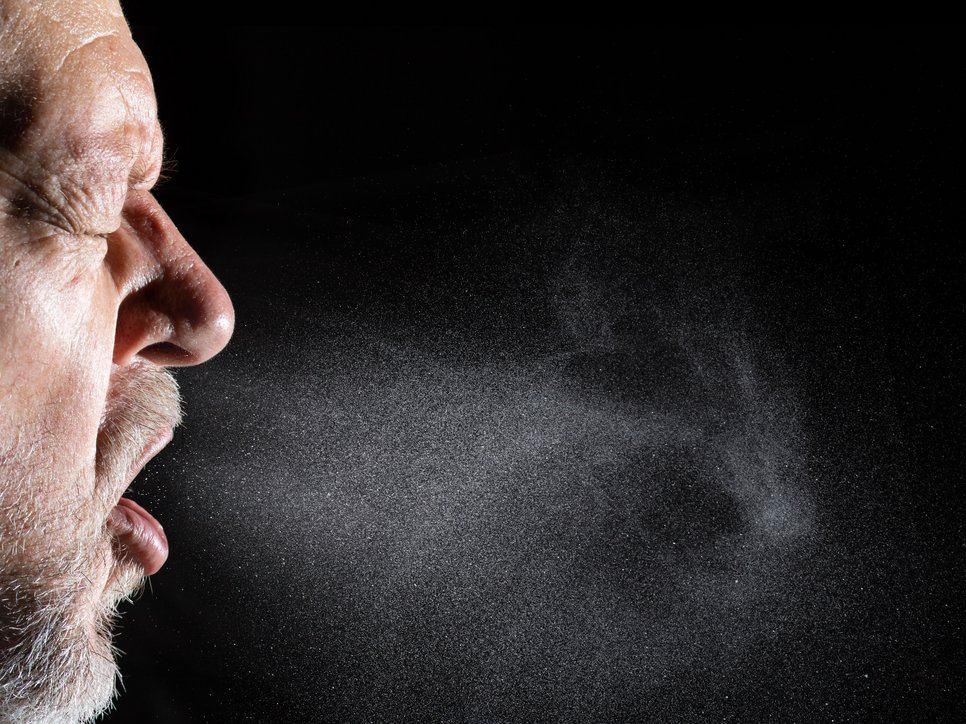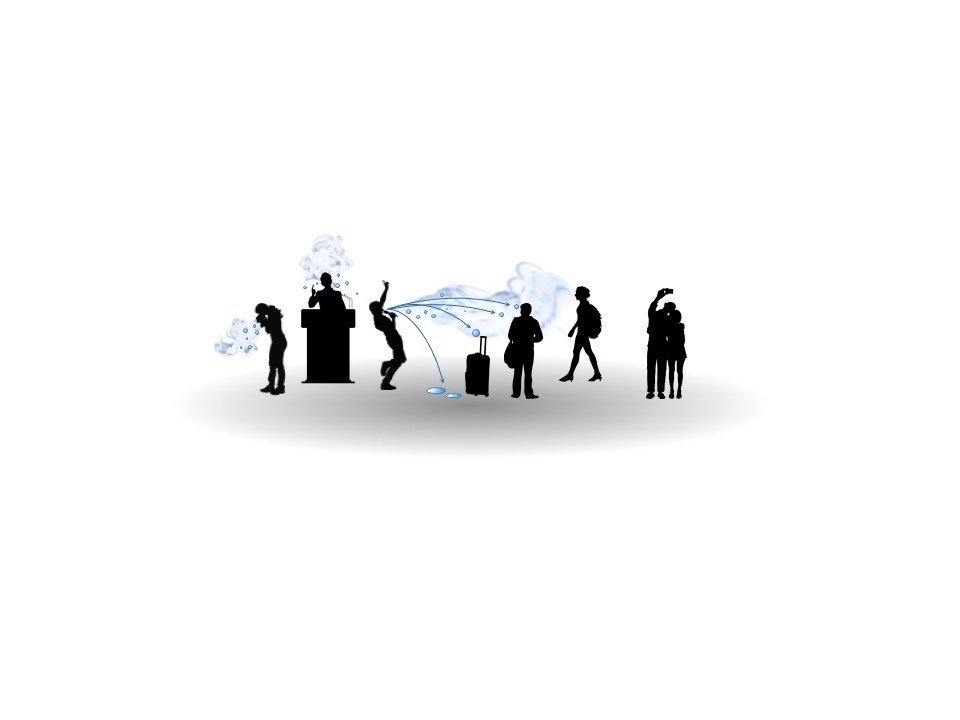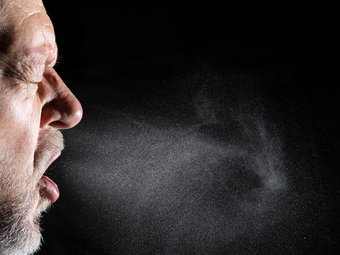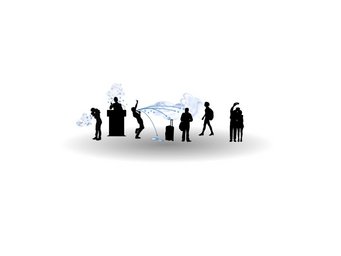A new reference work for aerosol research and the study of infectious diseases
A new scheme classifies respiratory droplets according to their place of origin—and can help in the treatment and prevention of infectious diseases
• Aerosols are key carriers in the spread of infectious diseases like colds, flu, Covid-19, measles, and tuberculosis
• Essential physical and chemical properties of the aerosol particles that contribute to the spread of pathogens are not well known
• The size of airway particles depends on where they originate in the airway tract
• The publication will serve as a reference work for aerosol researchers and those specializing in infection diseases

Everywhere you go, you hear sniffles and coughs—one more sign that winter is just around the corner. Many infectious diseases—colds, flu, Covid-19, but also measles and tuberculosis—are spread from person to person when speaking, sneezing, or coughing. The pathogens—viruses or bacteria—stow themselves away in aerosols and droplets that an infected person releases through the mouth and nose, thus leading to the spread of the pathogens.
While infectious diseases are widespread all around the world, essential physical and chemical properties of the particles that spread them are still not well understood. Nor is there much understanding of where they are formed in the respiratory tract or during which process—or how they are transported and which pathogens they carry with them.
It is in this context that Mira and Christopher Pöhlker are set to present a comprehensive survey and a model that categorizes respiratory aerosols and droplets into groups, based on their size and where they originate in the respiratory tract. The study was carried out alongside a number of colleagues from the Max Planck Institute for Chemistry, the Max Planck Institute for Dynamics and Self-Organization, and other institutes, and delivers initial clues as to which activities within our respiratory tracts can promote the spread of particular pathogens. “Our classificatory scheme will help others to localize and track the sources of infectious particles,” says Pöhlker. The aerosol researcher is convinced that the new classificatory scheme will promote a better understanding of infectious diseases—and how to contain them.
Respiratory activity, the spread of pathogens, and what they have to do with each other

https://doi.org/10.1103/RevModPhys.95.045001
For their study, the married couple combed through over 400 publications on aerosols and respiratory-related diseases. Among them were many theoretical and experimental studies conducted in the shadow of the Covid-19 pandemic. Their own experiments were also included, using tools such as high-resolution size spectrometers and holographic images to look into how respiratory aerosols and droplets spread during activities such as breathing, speaking, and singing. They also looked at what kind of protections—social distancing, masks and ventilation, for example—protect against Covid. “We studied aerosol formation in 132 people during various activities,” explains Eberhard Bodenschatz, Director of the Max Planck Institute for Dynamics and Self-Organization. “It turned out that the risk of infection from aerosols, and the protections that are thus needed, largely depend on the part of the respiratory tract the virus is located in,” Bodenschatz continues.
The Covid-19 pandemic also prompted a review article since published in “Reviews of Modern Physics.” Christopher Pöhlker usually studies aerosol particles in forest ecosystems like the Brazilian rainforest, while his wife Mira is a cloud researcher at Leipzig University and the Leibniz Institute for Tropospheric Research (TROPOS). Like most others, they found themselves stuck at home during the early stages of the pandemic at the start of 2020, so they turned their attention to Covid-19 and other infectious diseases spread largely by aerosols. “It had been our assumption that the physical and chemical fundamentals of how and where airway particles form, and their size, was well established. Because after all, the mechanisms are important not just for Covid-19, but also for flu, tuberculosis, measles, and many other diseases,” says Pöhlker. “But that wasn’t the case. We were very surprised to find out that there was little data, and the data that did exist was not standardized—thus making comparison difficult. We’ve changed that now. Our publication will, hopefully, be a useful reference tool for aerosol researchers and people working in infectious medicine research,” adds Mira Pöhlker.
A new reference work for aerosol research and the study of infectious diseases
The researchers have categorized airway particles in a new schema based on the place they originate in the respiratory tract. The smallest droplets—measuring less than 0.2 micrometers across and between about 0.2 and one micrometer—are formed in the bronchioles (fine branches of the lungs) and thus assigned to two bronchiolar groups. Their formation is caused by the thin film of fluid on the surface of the bronchioles. The film ruptures when a person inhales.
At the other end of the size spectrum are the oral aerosols and droplets. They generally come from the mouth, tongue, and lips, and measure anywhere between 8 and 130 micrometers across. They can occur when we speak or laugh, as this causes saliva threads to form then break apart within the mouth. When a person opens their mouth, these droplets escape and can come into contact with people in the immediate vicinity.
“In the oral groups, we’ve also included droplets that form in the nose or throat when sneezing, and which are often large enough to be visible,” says Pöhlker—whose airway droplets have likewise been measured in experiments.
And there’s another, in-between category: aerosol researchers have also defined the larynx-trachea group, which covers droplets that originate from the vocal folds that lie between the larynx and trachea. These particles are produced when laughing, speaking, singing, and coughing. “So if you want to protect yourself from small droplets from the lungs, it’s vital to use face masks with strong filtering and a tight fit. With the larger droplets from the upper airway, however, the filtering and the fit of the mask’s material are less important,” Mohsen Bagheri, group leader of Bodenschatz’s department.
“Our hypothesis had been that the size of a particle relates to its place of origin, as that’s something we’re familiar with from aerosols in the atmosphere,” says Christopher Pöhlker. “The analyses confirmed this, so we can use this to explain all the size distributions measured up to this point.”
The size of a particle is determined by where it originates
As for the question of which droplets carry which pathogens, the evidence is clearest when it comes to tuberculosis. “This lung disease is transmitted by bacteria that likely are too large for the bronchiolar aerosols. Our findings suggest that pathogens need medium-sized laryngeal-tracheal particles, i.e., the ones that form around the vocal folds,” says Mira Pöhlker. “That would match the kind of coughing that’s typical for tuberculosis.
Her husband adds: “the pathogens are clearly traveling in an optimal way. They travel on particles that are large enough to carry them, but small enough to penetrate deep into other people’s lungs.
With viral pathogens like flu and SARS-CoV-2, it’s still difficult to categorize particle size, place of origin, and potential for infection. “Whether or not a droplet is involved in the spread of a respiratory pathogen probably depends on the size of the droplet and the severity and location of the infection,” says Pöhlker. “But this is information we don’t have yet. There is little data we can use to assess how pathogens travel. To discover more about this, there will need to be studies with infected people and collaborations between aerosol experts and clinicians. This will make it possible for us to identify with more precision which measures are the most effective in preventing the spread of respiratory disease,” concludes the Max Planck researcher.

